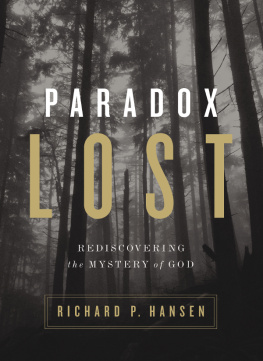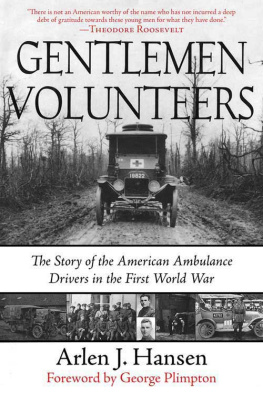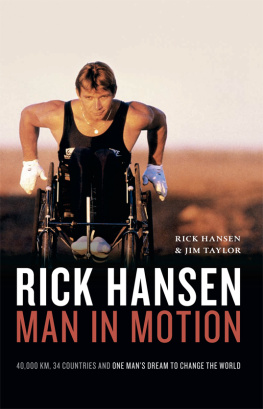Thank you for downloading this Simon & Schuster ebook.
Get a FREE ebook when you join our mailing list. Plus, get updates on new releases, deals, recommended reads, and more from Simon & Schuster. Click below to sign up and see terms and conditions.
CLICK HERE TO SIGN UP
Already a subscriber? Provide your email again so we can register this ebook and send you more of what you like to read. You will continue to receive exclusive offers in your inbox.
For Hlne
ONE
THE SECRETS TO GREAT PERFORMANCE
After nine grueling interviews, I landed my dream job as management consultant at the Boston Consulting Group in London. Ill never forget how I showed up on my first day, wearing an elegant blue suit bought for the occasion, with Oxford lace-up shoes to match. My girlfriend had given me a sleek, soft briefcase of the sort bankers carried around. As I strode through the front doors of the office in posh Devonshire House, right near Piccadilly, I looked the part, but felt intimidated.
I yearned to make a mark, so I followed what I thought was a brilliant strategy: I would work crazy hours. I didnt have much relevant work experienceheck, I didnt have any. It was my first real job. I was twenty-four years old and had just finished a masters degree in finance from the London School of Economics. What I lacked in experience I would make up for by staying late in the office. Over the next three years, I worked sixty, seventy, eighty, even ninety hours per week. I drank an endless stream of weak British coffee and survived on a supply of chocolate bars I kept in my top drawer. It got to the point where I knew the names of the cleaning staff who arrived at five in the morning. As you can imagine, my girlfriend soon wanted the briefcase back.
One day, as I struggled through an intense merger and acquisition project, I happened upon some slides created by a teammate (Ill call her Natalie). Paging through her analysis, I confronted an uncomfortable truth. Natalies work was better than mine. Her analysis contained crisper insights, more compelling ideas. Her slides boasted a clean, elegant layout that was more pleasing to the eye and easier to comprehendwhich in turn made her analysis even more persuasive. Yet one evening in the office, when I went to look for her, she wasnt there. I asked a guy sitting near her desk where she was, and he replied that shed gone home for the night. He explained that Natalie never worked late. She worked from 8 a.m. to 6 p.m. No nights, no weekends. That upset me. We were both talented and had the analytical capability required of BCG consultants. She had no more experience in the field than I did. Yet she did better while working less.
Three years later, I left BCG to embark on an academic career. I earned a Ph.D. from Stanford University and went on to become a professor at Harvard Business School. From time to time, I found myself thinking back to what I called the Natalie Question: Why had she performed better in fewer hours? She must have carried some secrets explaining her results. I began to wonder about performance in general and decided to focus my research on corporate performance.
Starting in 2002, Jim Collins and I spent nine years working on our book Great generally, to tackle the big question: why do some people perform great at work while others dont?
Social scientists and management experts explain performance at work by pointing to peoples innate gifts and natural strengths. How often These talent-based explanations are deeply embedded in our perceptions of what makes for success. But are they right?
Some work experts take issue with the talent view. They argue that
Talent, effort, and also luck undoubtedly explain why some succeed and others dont, but I wasnt satisfied with these arguments. They didnt account for why Natalie performed better than I, nor did they explain the performance differences I had observed between equally hardworking and talented people.
I decided to take a different approach, exploring whether the way some people worktheir specific work practices as opposed to the sheer amount of effort they exertaccounts for greatness at work. That led me to explore the idea of working smart, whereby people seek to maximize output per hour of work . The phrase work smarter, not harder has been thrown around so much that it has become a clich. Who wants to work dumb? But many people do in fact work dumb because they dont know exactly how to work smart. And I dont blame them, because its hard to obtain solid guidance.
I scanned for existing advice on how to work smarter, and the picture I arrived at was incoherent and overwhelming. Every author seemed to say something different. Prioritize. Delegate. Keep a calendar. Avoid distractions. Set clear goals. Execute better. Influence people. Inspire. Manage up. Manage down. Network. Tap into passion. Find a purpose. The list went on, more than 100 pieces of advice.
So what is really going on? If Natalie worked smarter than I, what exactly did she and other top performers do? What secrets to their great performance do they harbor? I decided to find out. After years of study, what I found surprised me a great deal and shattered conventional wisdom.
THE PERFORMANCE STUDY
In 2011, I launched one of the most comprehensive research projects ever undertaken on individual performance at work. I recruited a team of researchers with expertise in statistical analysis and began generating a frameworka set of hypotheses about which specific behaviors lead to high performance. I considered the scattered findings I had found in more than 200 published academic studies, and I incorporated insights from my previous discussions with hundreds of managers and executives. I also drew on in-depth interviews with 120 professionals and undertook a 300-person survey pilot. In the final step, we tested the emerging framework in a survey study of 5,000 managers and employees.
To organize the vast array of potential work smart factors, I grouped them into categories that scholars regard as important for job performance. We can think of work as consisting of job design characteristics ( what a person is supposed to do), skill development ( how a person improves), motivational factors ( why a person exerts effort), and relational dimensions (with whom and how a person interacts). Once I had settled on these broad categories, I examined factors within each, identifying those that previous research suggested were key. (The research appendix contains details on our methodology.)
With this initial list of factors in hand, my team and I designed a 96-item survey instrument, piloting it with a sample of 300 bosses and employees. We also tracked how many hours people worked each week, and we measured their performance relative to their peers. That way, we could compare the effects of hours worked and our work smart factors on performance. We spent months poring over statistical results from the pilot and our notes from in-depth interviews. We winnowed down the number of plausible factors until we arrived at eight main factors. After some more analysis, we discovered that two were similar, so we combined them into one (see the research appendix for further explanation).
In the end, we discovered that seven work smart practices seemed to explain a substantial portion of performance. (It always seems to be seven, doesnt it?) When you work smart, you select a tiny set of priorities and make huge efforts in those chosen areas (what I call the work scope practice). You focus on creating value, not just reaching preset goals (targeting). You eschew mindless repetition in favor of better skills practice (quality learning). You seek roles that match your passion with a strong sense of purpose (inner motivation). You shrewdly deploy influence tactics to gain the support of others (advocacy). You cut back on wasteful team meetings, and make sure that the ones you do attend spark vigorous debate (rigorous teamwork). You carefully pick which cross-unit projects to get involved in, and say no to less productive ones (disciplined collaboration). This is a pretty comprehensive list. The first four relate to mastering your own work, while the remaining three concern mastering working with others.
Next page












